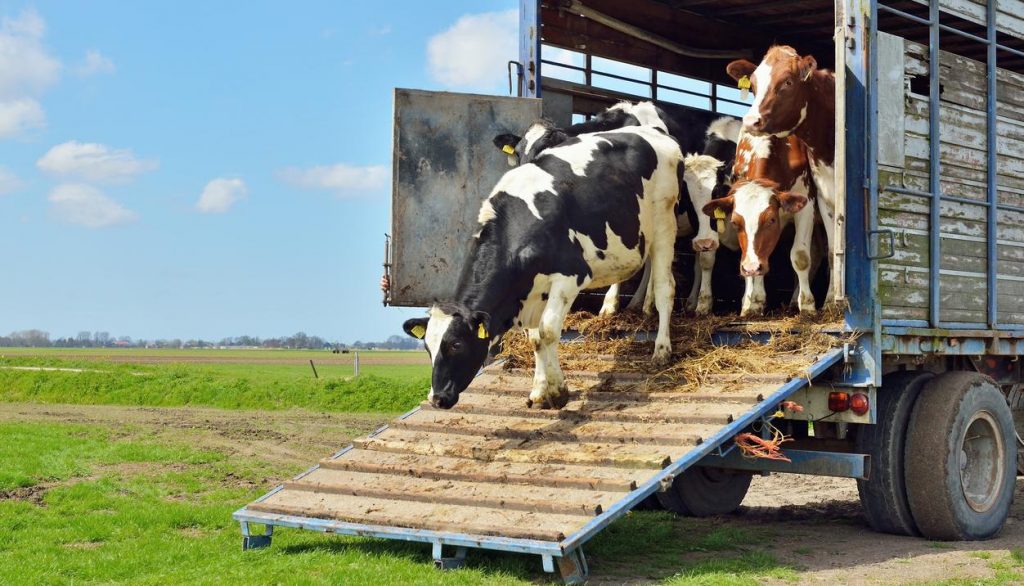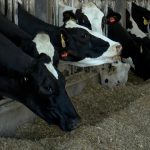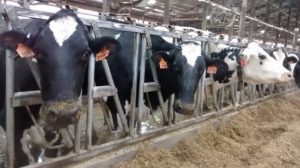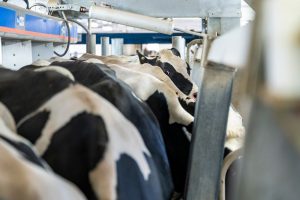
The movement of dairy cows, some of which aren’t showing disease symptoms, from already affected states such as Texas has been a source of H5N1 spread to dairy herds in states such as Idaho and Michigan. Also, the identification of virus fragments in finished milk suggests that the virus may be more widespread in dairy cows than currently known.
Wider cow testing to help fill data gaps
At a Department of Health and Human Services (HHS) media briefing today, Michael Watson, PhD, administrator of the USDA Animal and Plant Health Inspection Service (APHIS) said the new testing order—which will increase information available to the USDA—also requires labs to report the H5N1 test findings to federal officials. Positive cows must be held for 30 days before they are moved.
Watson said he expects the testing will help shed light on the extent of virus circulation in asymptomatic cows and fill other information gaps.
For now, the National Animal Health Laboratory Network, which has 50 labs, has enough capacity and materials for testing and can conduct tens of thousands of tests per day, he added, noting that testing takes about 1 to 3 days. Scientists are developing a field test that producers can use on farms.
We continue to ask for producer cooperation to ensure the confidence of Americans and to keep Americans safe.
Watson said so far there are no changes to the virus circulating in cows that would make it more transmissible to humans and that the risk to the public remains low.
Watson shared a few new details about the situation in cows, including that one sample from a cow in Kansas showed a genetic shift that suggests adaptation. And though cows sickened by H5N1 have shown little to no mortality, lung samples from a culled dairy cow yielded H5N1.
“We continue to ask for producer cooperation to ensure the confidence of Americans and to keep Americans safe,” he said.
FDA expands probe of virus fragments in retail milk
Donald Prater, DVM, acting director of the FDA Center for Food Safety and Applied Nutrition (CFSAN), emphasized that despite test findings released yesterday, the nation’s milk supply remains safe.
Though health officials feel confident that current pasteurization processes inactivate H5N1, based on what’s known in the scientific literature about flu viruses and other pathogens, testing is under way to gauge the specific impacts of H5N1 in milk and other dairy products such as cream.
He also noted that heat inactivation processes for eggs, which involve lower temperatures than pasteurization, has been successful in preventing the spread of H5N1 from food to people.
Prater said the FDA is conducting tests on milk samples that yielded H5N1 fragments to assess if the products contain live virus, which would pose a larger threat. Those test methods take more time and involve egg inoculation and cell culture.
Monitoring human health, assessing countermeasures
Federal health officials today noted that the virus remnants were found in tests by the FDA and in a smaller number of milk samples tested by scientists with the National Institute for Allergy and Infectious Diseases (NIAID) Centers of Excellence for Influenza Research and Response (CEIRR) Network.
When pressed to share details on the geographic location of the positive milk samples, Prater said the FDA is conducting a nationwide survey and will release the results in the days ahead.
A senior official with the Centers for Disease Control and Prevention (CDC) told reporters that 44 people exposed to infected cattle have been tested, and so far, just one person has tested positive, the previously mentioned patient from Texas.
He added that the CDC’s foodborne illness division hasn’t detected any concerning activity linked to milk and that surveillance activity, including in areas near affected farms, has shown no unusual trends.
Regarding preparedness, Dawn O’Connell, JD, assistant secretary for preparedness and response at HHS, said states can request personal protective equipment (PPE) from the federal government to supplement their own stockpiles. She added that the federal government has millions of doses of antivirals in the Strategic National Stockpile. The CDC recently said its testing found that the virus is susceptible to currently approved neuraminidase inhibitors.
There’s not currently a need to ramp up [vaccine production].
Two candidate virus vaccine strains against H5N1 developed earlier by the CDC appear to be well matched to the circulating strain, and she said hundreds of thousands of doses could be made in a matter of a week.
O’Connell said the HHS has issued a request for proposals from mRNA vaccine manufacturers in case a vaccine is needed. However, she said the risk from H5N1 to humans remains low. “There’s not currently a need to ramp up.”
You can now read the most important #news on #eDairyNews #Whatsapp channels!!!
🇺🇸 eDairy News INGLÊS: https://whatsapp.com/channel/0029VaKsjzGDTkJyIN6hcP1K

























